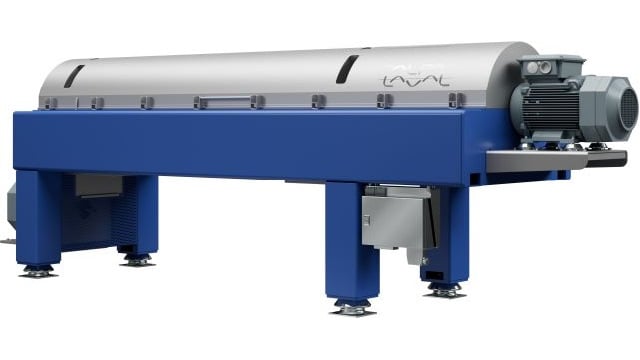ALDEC
Den mindre og lavteknologiske Aldec-dekantercentrifuge, er ideelt til rensning af spildevand i mindre mængder, og passer til virksomheder der er på udkig efter en pålidelig slamafvandingsløsning uden at skulle betale en formue.
Mindre vand, lavere omkostninger
Omkostningseffektive dekantercentrifuger er afgørende for at fjerne vandindholdet fra slam fra spildevandsanlæg såvel som fra industrielt affaldsstrømme. Jo tørrere slammet er, jo mindre plads tager det, og jo mindre vejer det - begge resulterer i store besparelser på transport- og bortskaffelsesomkostninger.
Vælg den bedste løsning
Konventionel, superpålidelig Aldec dekantercentrifugen er ideelt for slamafvanding uanset type af spildevandbehandlingsanlæg. De er den idelle lavteknologiske tilføjelse til de mere avancerede Aldec G3 enheder med større kapacitet.
Store fordele
Med Aldec dekantercentrifuger drager du fordel af at have et lavt energiforbrug samt minimale vedligeholdelsesomkostninger, hvilket holder dine afvandingsomkostningerne på et minimum. De er også fuldautomatiske, så du kan holde arbejdsomkostningerne nede.
Aldec dekantercentrifuger fås med kapaciteter fra 2 til 95 m3/h.
Sådan fungerer det
How do two-phase decanters work?
Learn how to improve efficiency in sludge thickening and dewatering
Separation of sludge in wastewater occurs in a horizontal cylindrical bowl with a slimline screw conveyor. The feed enters through a stationary inlet tube and is smoothly accelerated by an inlet distributor in the feed zone. Centrifugal force causes solids to sediment on the bowl wall. The conveyor, rotating slightly slower than the bowl, moves solids to the conical end. The cake exits through discharge openings into the casing. Separation takes place along the entire cylindrical bowl, and the clarified liquid exits through adjustable outlet tubes.

